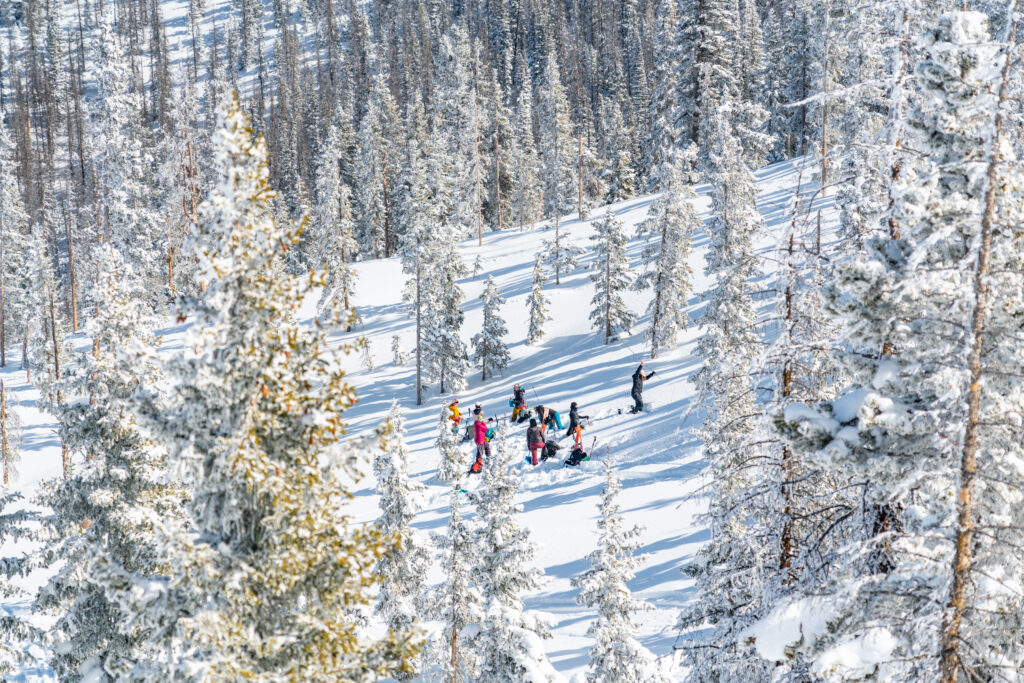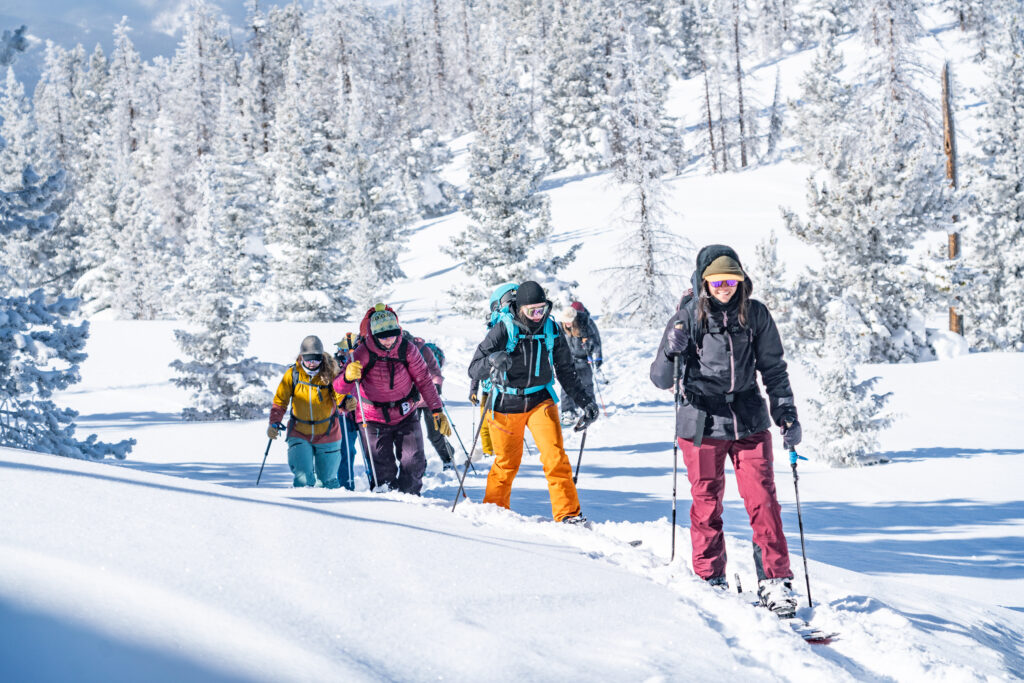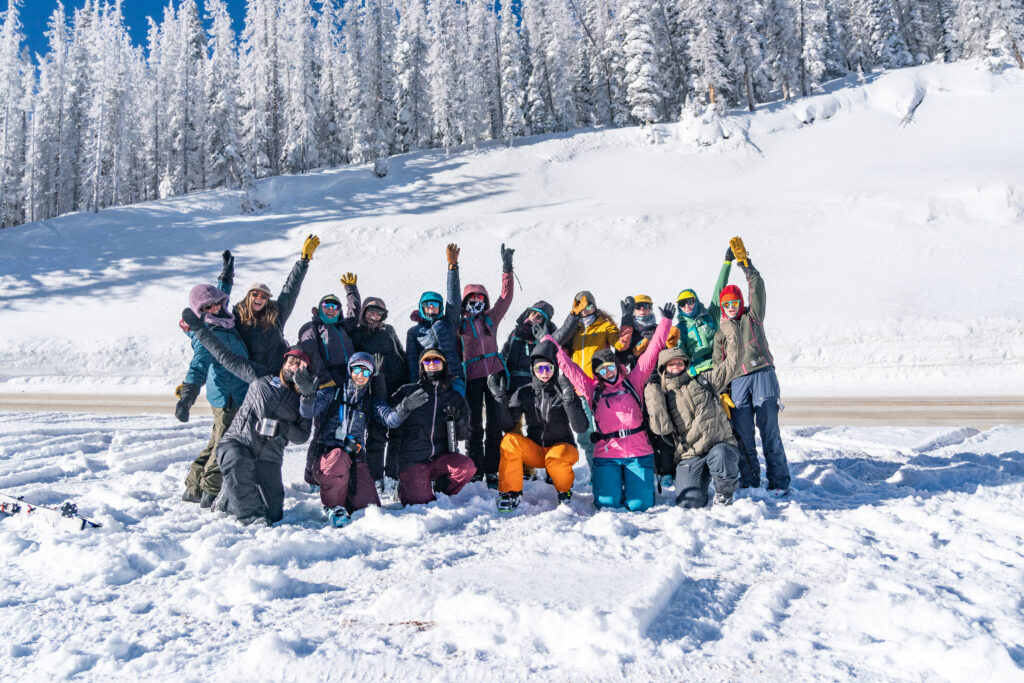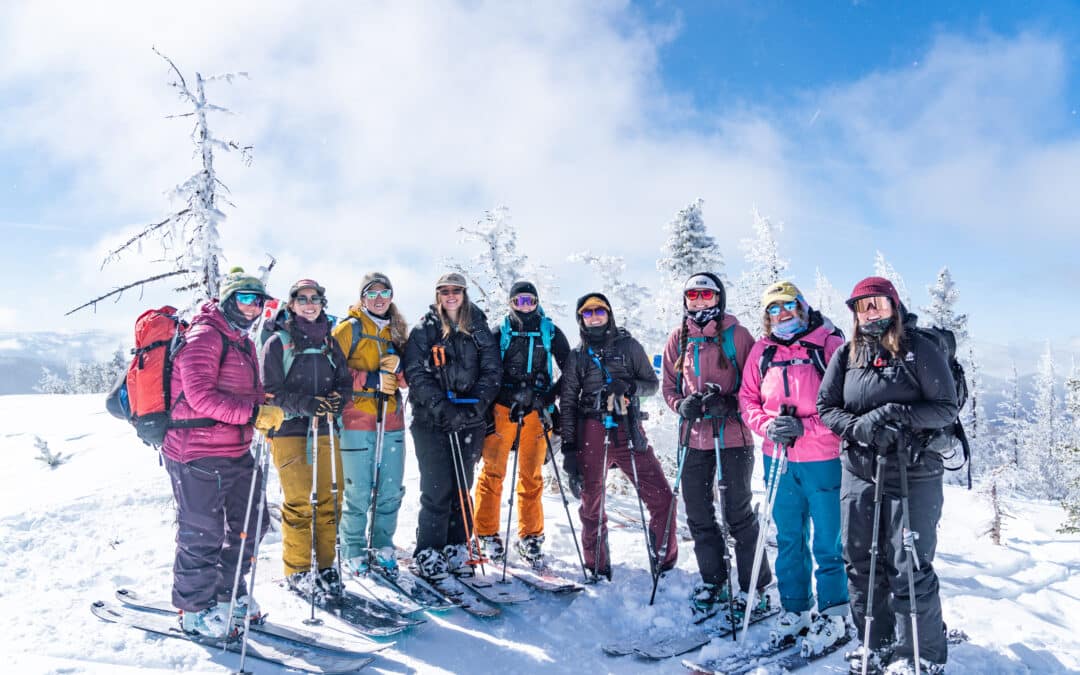Originally published on Pallas Snowboards
There is a lot of great information out there about the backcountry and how to properly and safely travel during the winter months. So, why would you pay to take an official avalanche education course? When it comes to avalanche mitigation, I believe reading books like Staying Alive in Avalanche Terrain or watching YouTube videos from backcountry companies and instructors is incredible extra credit. But, the real learning comes from being in the terrain you’re exploring and physically seeing and traveling in the backcountry. So, as a seasoned backcountry instructor, here are my top 3 reasons why I encourage you to sign up for your first avalanche education course or to continue your education with additional courses and refreshers.
1. IN THE FIELD + HANDS ON EXPERIENCE:
Avalanche education is hands on. During your avalanche education course, you are out in the elements and truly participating in all of these observations and practices. It’s hard to decipher avalanche terrain on a flat map, but when you’re in the mountains, it’s easier to see the concept of being connected to steeper slopes or complex terrain vs simple terrain. Even “micro-terrain” (small slopes or sections of terrain that is over 30 degrees or a cliff, exposure, etc..) is simpler to understand when you’re out in it.
During your course, you will be in your own snowpit and getting your eyes and hands on the various layers in the snowpack. You can literally FEEL the weak and strong layers of snow and make educated decisions based on this information.
My favorite part is practicing with your rescue equipment. It’s awesome and necessary to carry your transceiver, shovel and probe! Maybe you even have an airbag. But what is the point of this equipment if you don’t know how to or not comfortable using it? This is a practice you never want to use, but you need to be the most proficient at. Using these important pieces even have their own single day course: Companion Rescue. This is something avalanche professionals suggest taking every two years because practice makes perfect. You can check out these courses with outfitters like VNTRbirds that are women + femme specific outdoor educators.

Photo: Katie Young – @kaytii
It’s just not enough to go out with friends who have taken courses or lots of experience, because they can make mistakes too. If an accident did occur, would you be able to step up?
2. GROUP DYNAMICS:
When you register for a course, even if you sign up with a friend, there are a lot of other students there you may have never met before. This is a great opportunity to exercise your backcountry voice. Now, I don’t mean the ability of shouting loudly to your group, but to be able to speak up about terrain choices, planned routes and when conditions are just not meeting expectations. It’s important to be able to listen to the voice inside your head and then relay that to your group whether you have the most or least experience. Your voice still matters and it only takes one “no” from your group to not go into a specific zone. A course gives you the confidence to have harder conversations with your backcountry group when you are talking about risk management.
It’s also a great opportunity to practice your pace while traveling with a group. Your pace depends on your backcountry partners. If you all tour quickly, then you’re going to be setting a faster pace, but you should always match with the slowest partner in the group so no one is ever out of eye or ear shot. I always suggest setting a pace where you can still hold a conversation without being overly exacerbated by talking. This also makes sure you aren’t sweating a bunch and then getting cold by the top of the tour.

Photo: Katie Young – @kaytii
3. A MENTOR TO GUIDE YOU + MORE BACKCOUNTRY FRIENDS TO TOUR WITH:
When you’re taking any avalanche course you have the guidance and knowledge of an avalanche professional that is there to support you through your backcountry journey. The instructor creates the space for you to voice your concerns, for you to be wrong and then learn why. It is the platform to bring more people into the backcountry with proper knowledge, confidence and self-reliance. When taking a course with VNTRbirds, you gain backcountry mentors for life!
We are here to help you invest in new gear (like the Pallas Epiphany splitboard), create your own maps while planning routes, learn tips about how to get your bindings locked in easier or that one piece of gear we will never leave the house without (ski straps and duct tape for me) and any other questions that come up as you continue to explore the backcountry.
Sometimes the hardest part of getting into the backcountry (or a new sport in general) is finding good backcountry partners. By taking an avalanche course, there are a dozen new backcountry goers waiting to go out with you. You also discover what makes a “good backcountry partner” over just a backcountry partner with a lot of experience.

Photo: Katie Young – @kaytii
Once you’ve completed your avalanche course you will “speak the same language” as the professionals in the community. You will have the tools to create a tour, the skills to recognize red flags and the communication skills to stay safe. As well as a certification to show for all your work and effort. Taking a course gives you the opportunity for repetition while learning. You will gain extra tips and tricks from your instructors and fellow backcountry users. It truly makes a huge difference in your confidence and your decision making to have been navigating terrain and creating group educated choices after an avalanche educational course.

